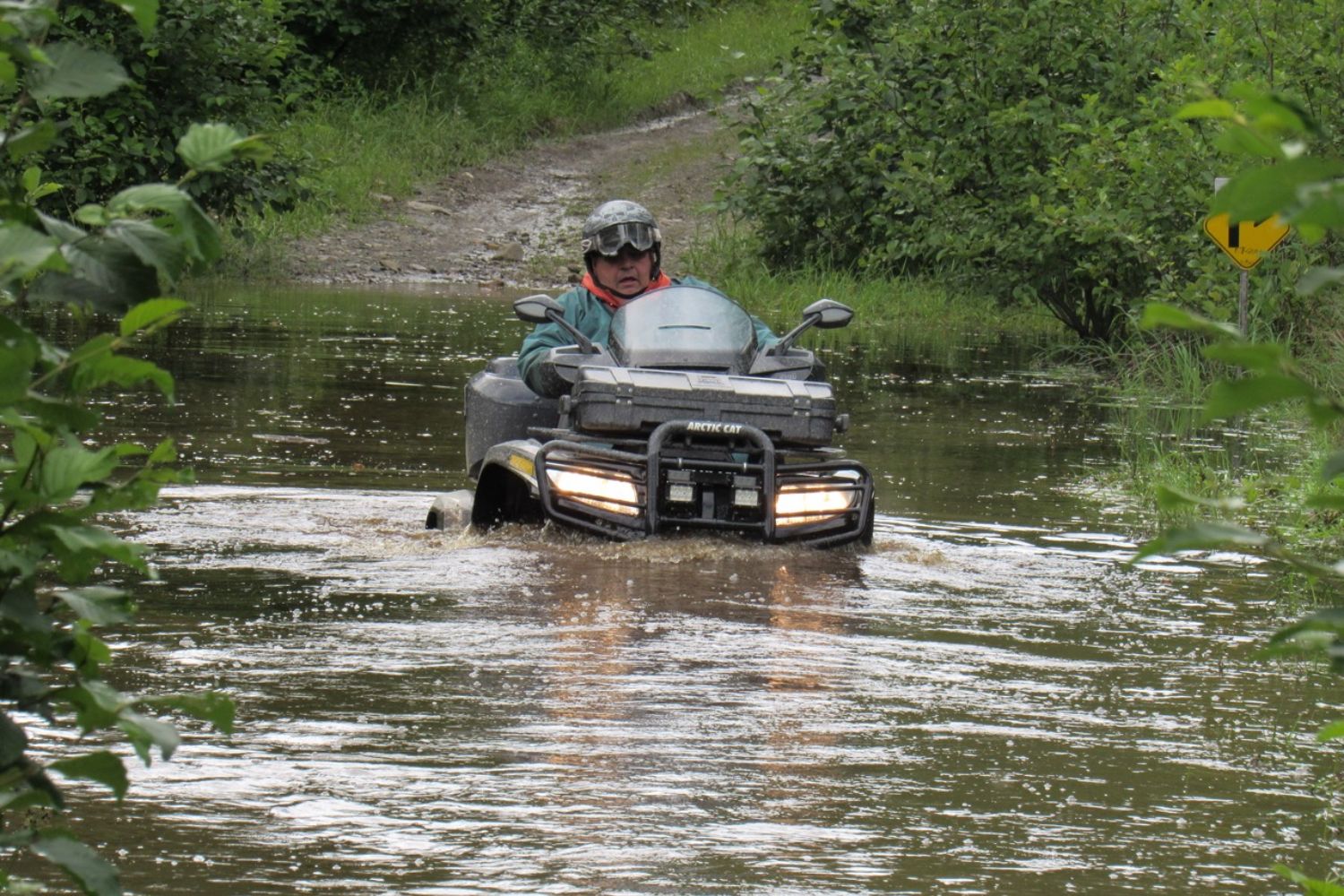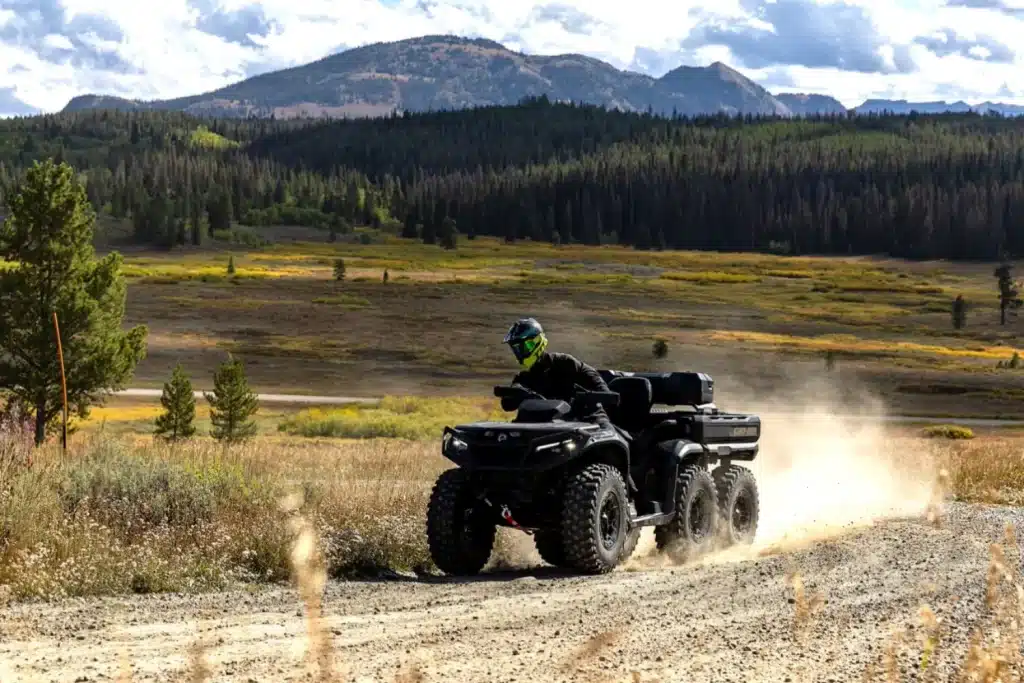Electrical problems can happen continuously on ATVs and hopefully after reading this story it will help you spend more time riding and less time fixing.
Last week I drove my ATV to the corner store and everything seemed to be fine. That was until I tried starting it a while later for the return trip home, this is when the trouble started. When I turned the key, the lights came on and so did the fuel pump as they should, when I pushed the start button… everything remained quiet. No lights, no dash lights, I can’t hear the fuel pump, no nothing. I checked all of my fuses, I checked the three main, the ones at the back of the ATV and they were all good. When I turn the key on I can feel the big grey relay in the fuse panel click. I used a light tester to check for power at the fuses and there is no power to any fuse. I pulled the fuses out and tested both polls in the panel for each fuse and no power… not too sure what’s going on. I know there’s nothing wrong with the starter system, because the relay is clicking when I turn the key on. Well… I found the problem, it was a bad relay, in the front fuse panel, there’s one big relay on the right and two smaller relays on the left. All I did was swap the two relays that are the same on the left and everything came back to life! Some relays are known to give trouble, so now I just have to replace that one bad relay.
But wait there’s more, I found the multi-wire connectors under the fuse panel that had one wire back out of a connector and this too was giving lots of problems. The only way I found this problem is when I started to poke and prod the wiring harness under the fuse panel. When I pushed the wiring one way it quit and the other way it fired. This is when I noticed that I had one wire back out of a connector. I thought it would be a good idea to go over all of these multi-wire connectors and check for a good fit, use a small amount of dielectric grease for a seal and then I was good to go.
Heads up on Electrical Problems
When we gathered information for this story, we talked to several mechanics on electrical problems, there was a pattern that had quickly developed and the following is what we found: Mechanics all agree that a bad ground is often the problem and can cause a lot of problems. This is something that should be checked after checking the fuses. Grounds can work themselves loose, break or become corroded. A good ground is something that needs attention for all motorized vehicles and trailers.
A quick inspection for melted or burned connections and wiring is another check. Often there are visual signs of electrical problems, such as: melted insulation on wires burned or melted connectors. If there is a visual sign, then it needs immediate attention, if there are problems just after storage or if the ATV was sitting for a while, maybe check the wiring harness for mice damage, for some reason these rodents like chewing on wiring. Mice seem to like the flavour of wire insulation and sometimes they can bite right through the wire.
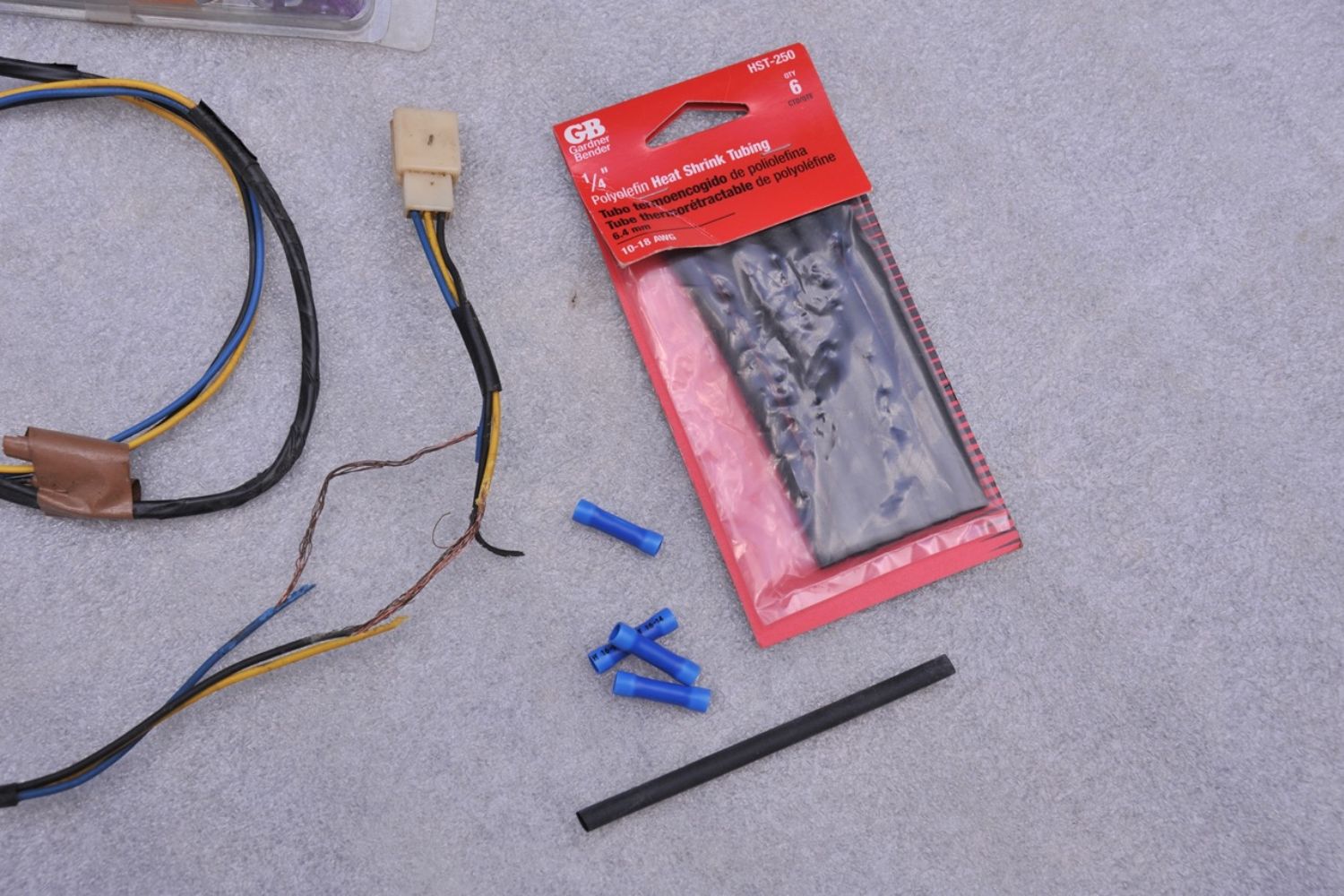
If there any added non-factory accessories, this could be another place for an early check. This Outlander has a Warn winch that was added on later, it was not factory installed, but it does need some maintenance.
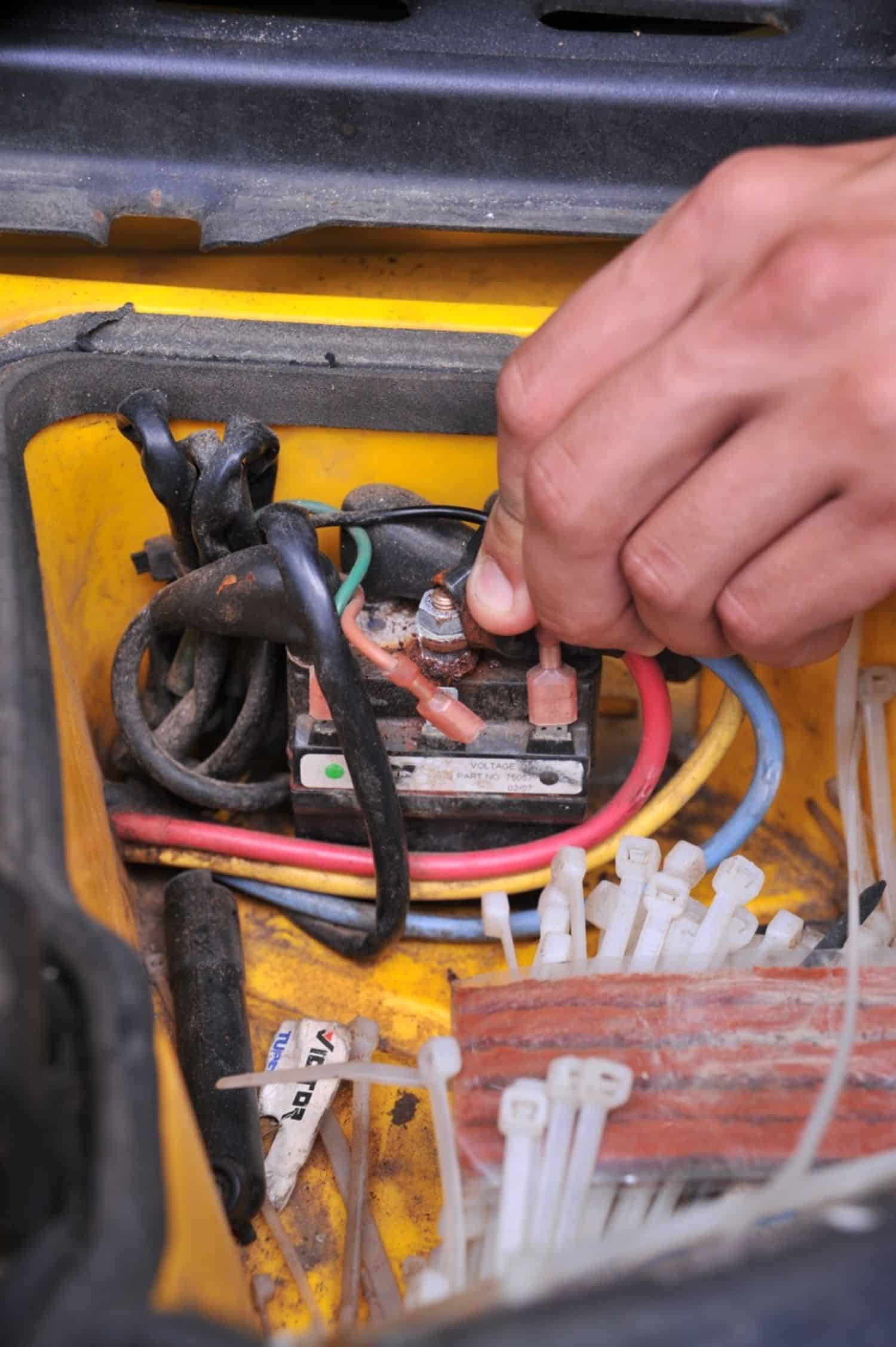
An Interesting Test
A couple of years back, a renowned manufacturer did a blind field test on CDI units. Here is how it worked; whenever someone ordered a new CDI unit for any of their power sport equipment, they offered a 50% discount, if the customer returned the old unit. Much like a core charge or exchange, they tested all these returned units. After testing several hundred units they found 99% were still good and operating perfectly. They also noted, that the reason these units started to work again, was the slide action of disconnecting and connecting the terminals, this cleaned the connection surfaces and enabled the CDI to work again.
A step further; it’s a good idea to go through your ATV’s connections. Because while manufacturers now install weatherproof connectors, the ATV models of a few years ago had no protection at all, despite the intense use for which the quad is intended.
Disconnect all the connections and blow them out with air and use some dielectric grease to seal them all. This is a step the OEMs should do, but unfortunately they do not. Dielectric grease is magic with electrical connections, it will not hurt the connecters, metal, plastic, rubber or wire, and it’s a preservative and it also promotes a good connection. This magic grease protects even with the next problem, read on!
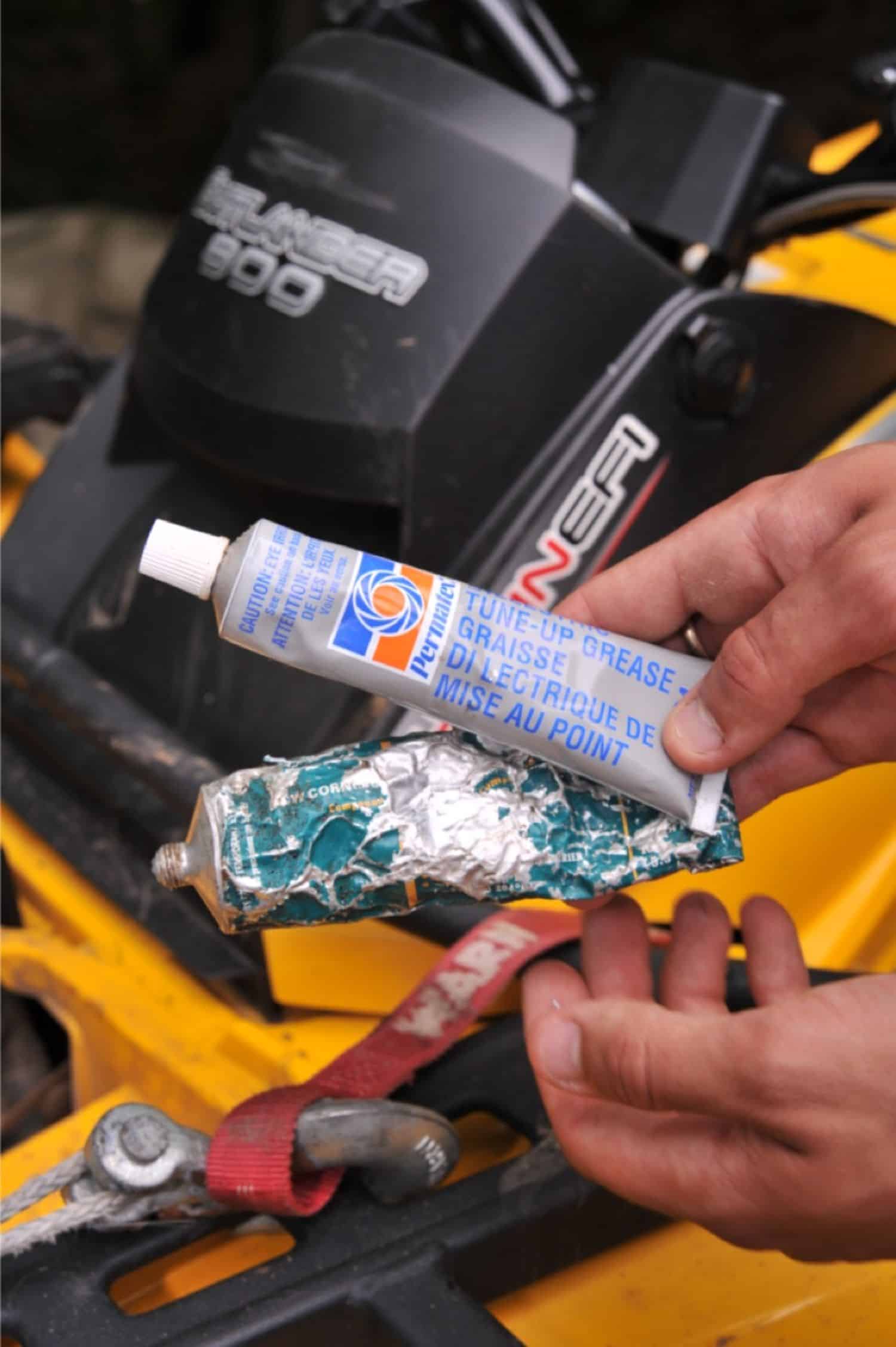
If you use your ATV in the winter and spend a lot of time running over the winter roads, maybe the salt or salt brine solution is causing problems. Here is what a major truck repair center had to say about this problem. “We have never had so many electrical problems with our trucks before, the new brine salt solution the Road Departments now use in the winter, is causing wiring, sensors failures and electrical problems. It’s a major problem in our Service Department today,” says Rob Long, General Manager of Carrier Truck Centers. This corrosion problem is a major concern for ATVs as well, many of us travel the salted roads in the winter and some of us drive our units over salted roads. The potential for corrosion problems to ATV wiring, sensors and connections is serious. Once wiring or connections have corroded with a green colour it’s too late. One can get a jump on this problem by cleaning the connections and sealing everything with dielectric grease.
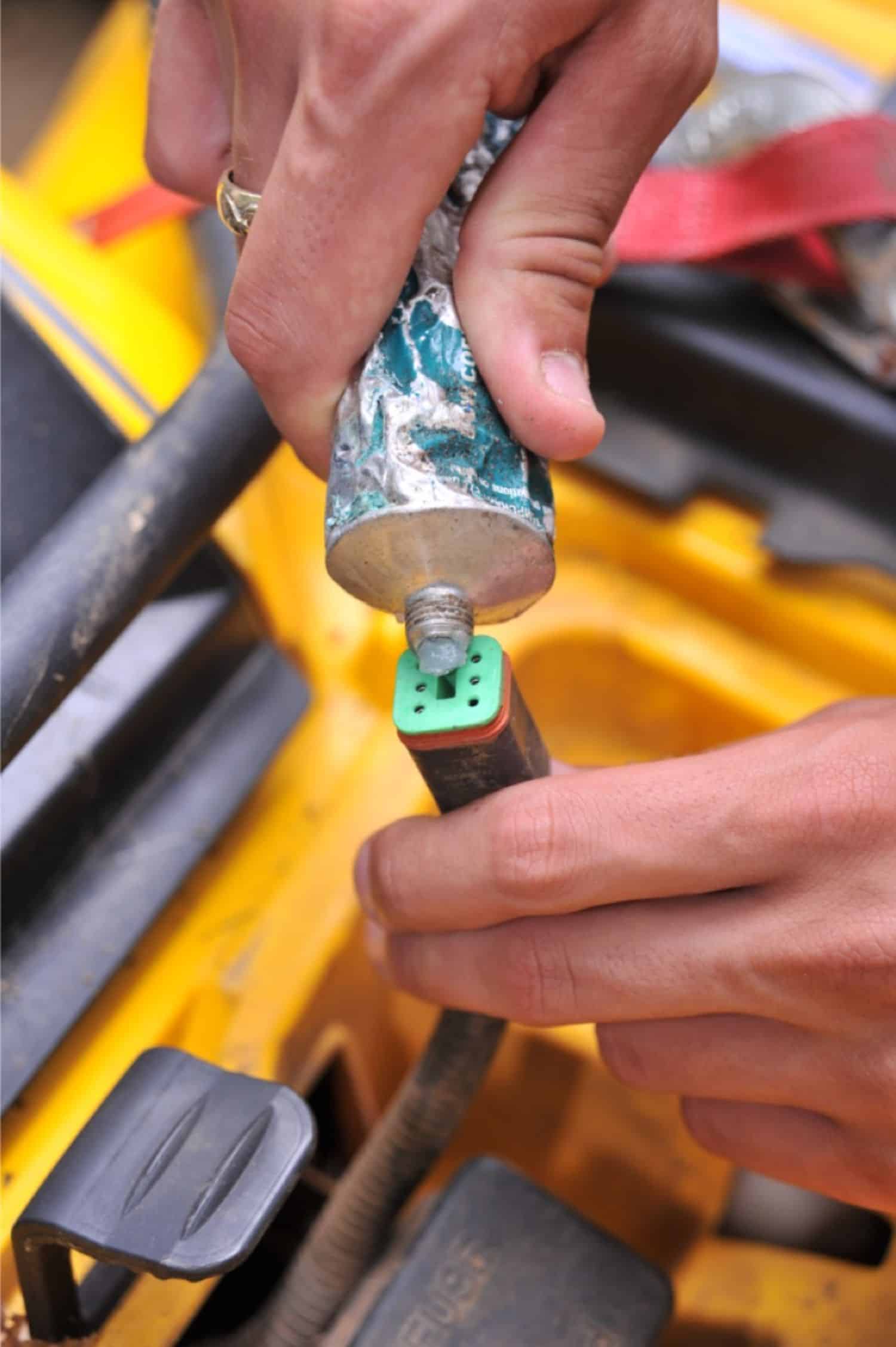
ATVs tend to be used in adverse conditions, running through water, mud, wet, salt solutions and other contaminants that all play havoc on your ATV’s electrical systems. Riding in these conditions does require regular cleanings and preventative maintenance to extend the life of your ATV. The bottom line is, preventative maintenance is key. Spend more time riding and less time fixing the electrical gremlins!

